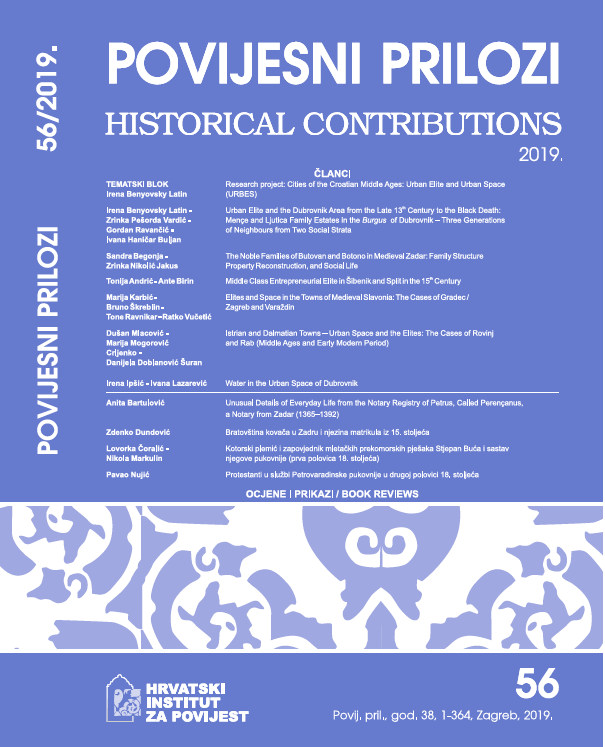Urban Elite and the Dubrovnik Area from the Late 13th Century to the Black Death: Mençe and Ljutica Family Estates in the Burgus of Dubrovnik – Three Generations of Neighbours from Two Social Strata
DOI:
https://doi.org/10.22586/pp.v56i1.9246Keywords:
Dubrovnik, 13th century, 14th century, social topography, urban elite, Mençe, LjuticaAbstract
This paper focuses on the spatial distribution of Dubrovnik’s urban elite, observed on the examples of the families of Matijaš de Mençe and Anđelo Ljutica, in the period from the late 13th to the mid-14th century and the time of Black Death. Using the methods of social topography and prosopography, the authors have studied the interrelation of the social and ownership statuses of these families, addressing the question of their social and spatial interconnections. In the early 14th century, both families belonged to the elite urban circles, but with a key difference: one of them was noble, and the other a family of commoners.







